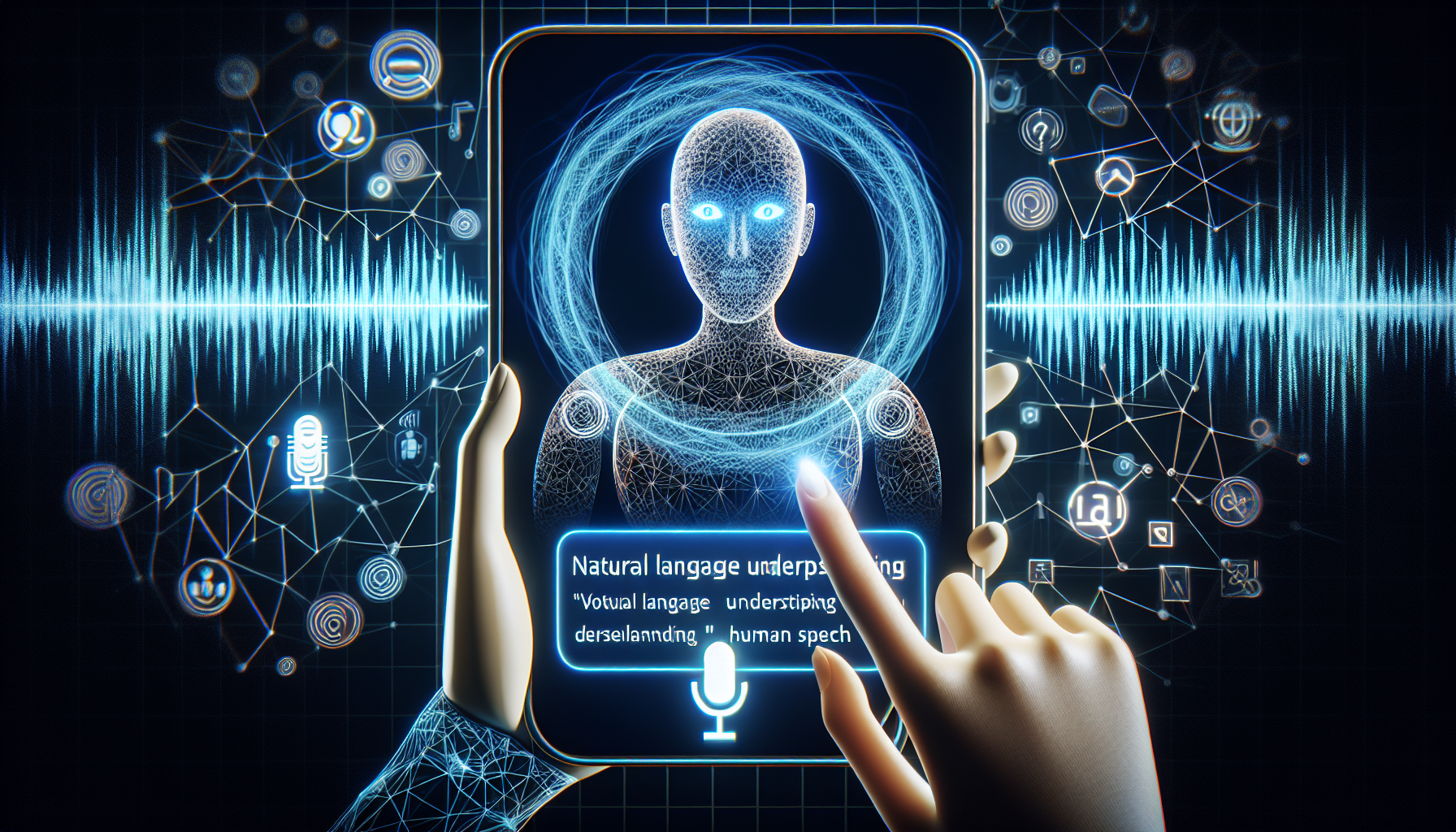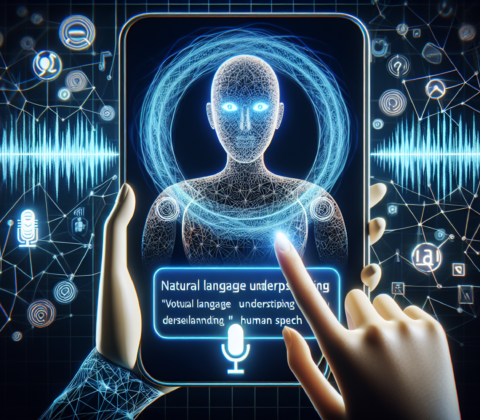Posts Tagged: Virtual Helpers


Enhancing Virtual Helpers with Natural Language Understanding
Today, AI assistants have become an integral part of our everyday lives, helping us with tasks and answering our questions. But have you ever wondered how these virtual helpers are able to understand and respond to our queries? The answer lies in the field of natural language understanding. By enhancing virtual helpers with this technology, they are able to grasp the nuances of human language and provide more accurate and relevant responses. In this article, we will explore the fascinating world of natural language understanding in virtual helpers, uncovering the advancements that have been made and the impact it has on enhancing our digital interactions. So, sit back, relax, and prepare to delve into the world of AI assistants like never before.
Enhancing Virtual Helpers with Natural Language Understanding
Technology has rapidly advanced in recent years, and one area that has seen significant growth is virtual helpers. These intelligent digital assistants, such as Siri, Alexa, and Google Assistant, have become an integral part of our daily lives. From managing tasks to providing information, these virtual helpers have revolutionized the way we interact with technology. However, to enhance their capabilities and make them even more intuitive, natural language understanding is essential.
Understanding the Importance of Natural Language Understanding
Natural language understanding plays a crucial role in improving the functionality and usability of virtual helpers. It enables these digital assistants to comprehend human language in a way that is similar to how we communicate with each other. By understanding the intricacies of human speech patterns, virtual helpers can interpret context, intent, and meaning, leading to a more conversational and fluent interaction.
Gone are the days of relying solely on explicit commands or precise keywords to communicate with virtual helpers. With natural language understanding, these assistants can grasp the nuances of language, allowing users to communicate more naturally and effortlessly. This advancement in technology has paved the way for a seamless user experience, eliminating frustrations and making virtual helpers more intuitive and user-friendly.
The Role of Virtual Helpers in Daily Life
Virtual helpers have become an indispensable part of our daily routines. From checking the weather to setting reminders, these intelligent assistants assist us in managing our hectic lives. With just a simple voice command, we can access a wealth of information, control smart devices, and even have our favorite songs play on demand. The convenience and efficiency they offer have made them an integral part of our homes, offices, and even our cars.
Whether it’s getting directions, checking your schedule, or finding a recipe for dinner, virtual helpers are always there to lend a hand. They provide us with real-time information, anticipate our needs, and make our lives easier in countless ways. However, to truly unlock their full potential, natural language understanding is vital.

Defining Natural Language Understanding
Natural language understanding, often abbreviated as NLU, is a branch of artificial intelligence that focuses on the interaction between computers and human language. It encompasses various processes and technologies that enable machines to comprehend, analyze, and respond to natural language inputs effectively.
In the context of virtual helpers, natural language understanding allows these digital assistants to understand and interpret the spoken or written language of their users. Rather than relying solely on predefined commands or keywords, virtual helpers with NLU capabilities can discern the context, infer meaning, and provide more accurate and relevant responses. This level of comprehension transforms the user experience, making interactions with virtual helpers feel more natural and conversational.
The Evolution of Virtual Helpers
Virtual helpers have come a long way since their inception, continually evolving to meet the needs and expectations of users. Initially, virtual helpers were limited to basic functions, such as setting timers or alarms. However, with advancements in artificial intelligence and natural language processing, they have become increasingly sophisticated and capable.
Today’s virtual helpers boast an array of features and integration with various applications and devices. They can answer questions, play music, provide recommendations, and even control smart home devices. The evolution of virtual helpers has been driven by the need to enhance user experience and make technology more accessible and intuitive. And at the heart of this evolution lies natural language understanding.

Challenges in Communicating with Virtual Helpers
While virtual helpers have improved significantly over the years, there are still challenges in effectively communicating with them. Traditional virtual assistants often struggle to understand complex or ambiguous queries, leading to inaccurate or irrelevant responses. This can be frustrating for users who expect a more seamless and intuitive experience.
Additionally, virtual helpers may encounter difficulties in understanding different accents, dialects, or languages. As language is inherently dynamic and ever-evolving, virtual helpers need to keep up with the latest linguistic trends and adapt to the unique ways individuals communicate. These challenges highlight the importance of natural language understanding in bridging the gap between humans and machines.
Benefits of Natural Language Understanding for Virtual Helpers
Natural language understanding offers a plethora of benefits for virtual helpers, greatly enhancing their capabilities and user experience. By incorporating NLU technology, virtual helpers can:
- Understand intent: Natural language understanding enables virtual helpers to grasp the intent behind a user’s query, even if it is phrased differently or contains subtle variations. This allows for more accurate and relevant responses, improving the overall user experience.
- Interpret context: With NLU, virtual helpers can analyze the context of a conversation, taking into account previous queries or information, and tailor their responses accordingly. This contextual understanding makes interactions more seamless and personalized.
- Handle complex queries: Natural language understanding empowers virtual helpers to handle complex or ambiguous queries with greater accuracy. By deciphering the meaning behind the query, they can provide more relevant and comprehensive responses, assisting users more effectively.
- Learn and improve: NLU technology allows virtual helpers to continuously learn from user interactions, refining their understanding and improving their performance over time. This iterative learning process ensures that virtual helpers adapt and evolve to better serve their users.
These benefits highlight the transformative impact of natural language understanding on virtual helpers, taking them from simple tools to intelligent digital assistants that can truly understand and assist users in their daily lives.

Technologies Behind Natural Language Understanding
Natural language understanding is built upon a foundation of various technologies that work together to enable machines to comprehend and process human language effectively. Some of the key technologies behind NLU include:
- Natural Language Processing (NLP): NLP focuses on the interaction between computers and human language. It involves techniques such as tokenization, part-of-speech tagging, and syntactic analysis, allowing machines to understand the structure and meaning within sentences.
- Machine Learning (ML): ML algorithms enable virtual helpers to learn and improve their understanding of human language over time. They analyze large datasets to identify patterns, make predictions, and refine their responses based on user interactions.
- Deep Learning: Deep learning is a subset of machine learning that focuses on artificial neural networks. It enables virtual helpers to process and understand language at a more complex level, mimicking the way the human brain works.
- Natural Language Generation (NLG): NLG technology allows virtual helpers to generate human-like responses to user queries. By utilizing predefined templates and algorithms, virtual helpers can create coherent and contextually relevant responses.
These technologies, in combination with natural language understanding, form the backbone of virtual helpers, allowing them to engage in rich and meaningful interactions with users.
Application of Natural Language Understanding in Virtual Helpers
The application of natural language understanding in virtual helpers is broad, covering various domains and use cases. Some common applications include:
- Information retrieval: Virtual helpers can utilize NLU to search for and retrieve specific information from vast databases or the internet. By understanding user queries and interpreting their intent, virtual helpers can deliver accurate and relevant information in a timely manner.
- Task automation: NLU enables virtual helpers to understand and execute user commands, automating tasks such as setting reminders, scheduling appointments, or sending messages. This streamlines daily workflows, saving time and increasing productivity.
- Personalized recommendations: With NLU capabilities, virtual helpers can analyze user preferences, behaviors, and context to provide personalized recommendations. Whether it’s suggesting movies, recommending restaurants, or offering tailored news updates, virtual helpers can enhance user experiences by delivering content that aligns with individual preferences.
- Customer support: Virtual helpers equipped with natural language understanding can handle customer queries and provide basic support, reducing the need for human intervention. By understanding user concerns and providing relevant solutions, virtual helpers can enhance customer satisfaction and streamline support processes.
These applications highlight the versatility and utility of natural language understanding in virtual helpers, enabling them to perform a wide range of tasks and cater to diverse user needs.

Improving User Experience with Natural Language Understanding
Natural language understanding has transformed the user experience of virtual helpers, making interactions more seamless, intuitive, and personalized. By understanding user intent, interpreting context, and adapting to individual communication styles, virtual helpers can provide more accurate, relevant, and helpful responses. This enhances the overall user experience, making interactions with virtual helpers feel more like natural conversations.
With NLU, virtual helpers can anticipate user needs, offer proactive suggestions, and learn from user interactions to continuously improve their performance. This iterative learning process ensures that virtual helpers adapt to individual preferences, making recommendations and providing assistance that aligns with user preferences.
Furthermore, natural language understanding enables virtual helpers to support diverse languages, dialects, and accents, making them accessible to a global audience. By understanding and accommodating a range of linguistic variances, virtual helpers can cater to users from different linguistic backgrounds and ensure inclusivity.
Future Trends in Natural Language Understanding
As technology continues to advance, the future of natural language understanding holds exciting possibilities. Some of the future trends in this field include:
- Contextual understanding: Future virtual helpers will become even more adept at understanding context. They will be able to comprehend complex conversations, infer implicit information, and recognize emotional cues, allowing for more nuanced and relevant responses.
- Multimodal interactions: Natural language understanding will extend beyond just spoken or written language. Future virtual helpers will be capable of interpreting gestures, facial expressions, and even physiological signals, enabling more immersive and natural interactions.
- Personalization: Virtual helpers equipped with NLU will become increasingly personalized, tailoring their responses, recommendations, and interactions to individual preferences and needs. This level of personalization will create a more meaningful and engaging user experience.
- Real-time translation: NLU technology will advance to enable real-time translation of spoken language. Virtual helpers will be able to facilitate communication between individuals who speak different languages, breaking down barriers and facilitating global connectivity.
These future trends signify the ever-growing capabilities of virtual helpers, powered by natural language understanding, and foreshadow a world where human-machine interactions seamlessly blend into our daily lives.
In conclusion, the integration of natural language understanding in virtual helpers has revolutionized the way we interact with technology. By enabling virtual assistants to comprehend human language in a more intuitive and context-aware manner, NLU technology has enhanced user experience, improved task automation, and transformed virtual helpers into intelligent and indispensable companions. As technology advances and natural language understanding continues to evolve, the future holds even greater possibilities, where virtual helpers seamlessly understand and cater to our every need.